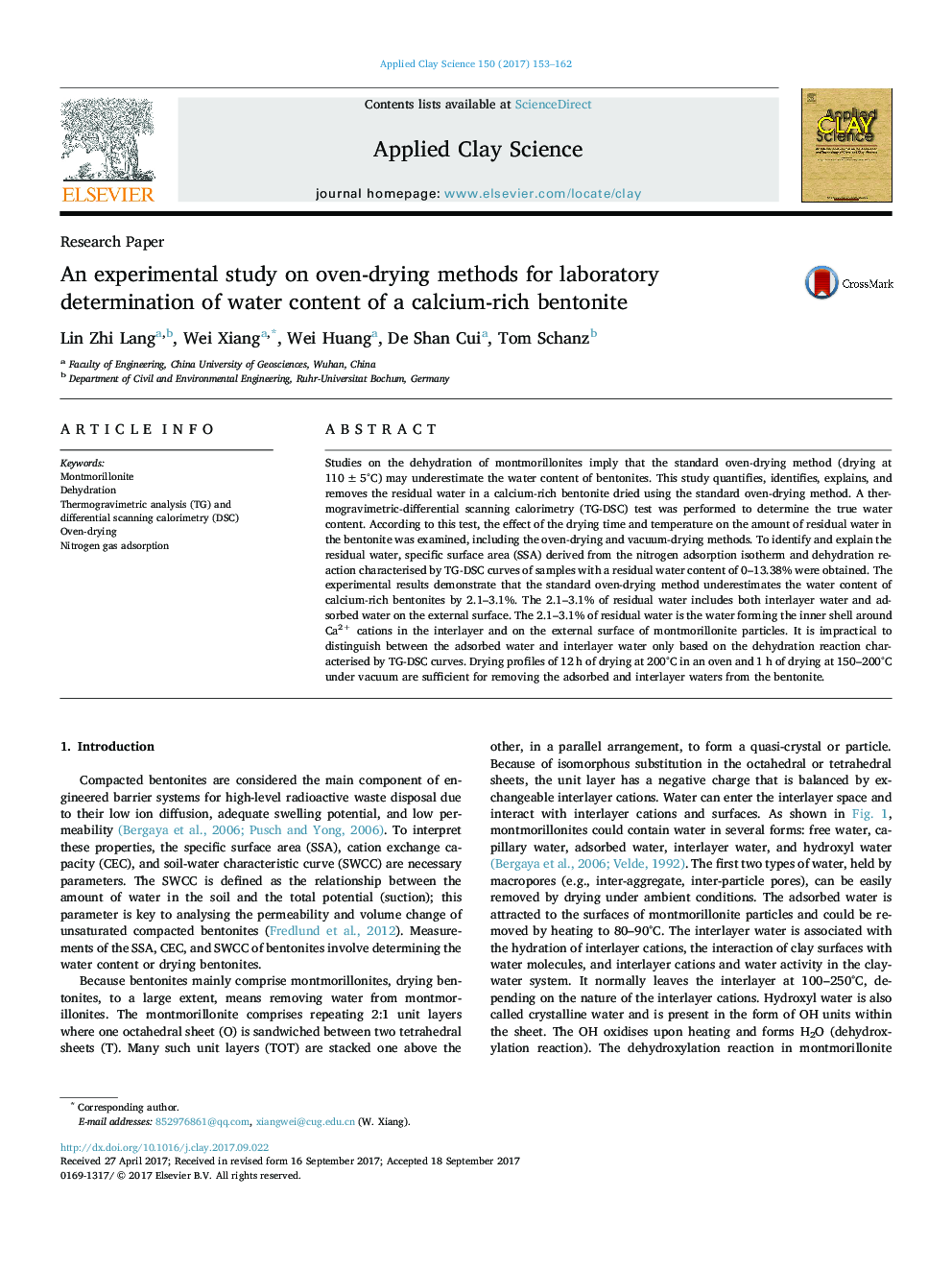| Article ID | Journal | Published Year | Pages | File Type |
|---|---|---|---|---|
| 5468495 | Applied Clay Science | 2017 | 10 Pages |
Abstract
Studies on the dehydration of montmorillonites imply that the standard oven-drying method (drying at 110 ± 5°C) may underestimate the water content of bentonites. This study quantifies, identifies, explains, and removes the residual water in a calcium-rich bentonite dried using the standard oven-drying method. A thermogravimetric-differential scanning calorimetry (TG-DSC) test was performed to determine the true water content. According to this test, the effect of the drying time and temperature on the amount of residual water in the bentonite was examined, including the oven-drying and vacuum-drying methods. To identify and explain the residual water, specific surface area (SSA) derived from the nitrogen adsorption isotherm and dehydration reaction characterised by TG-DSC curves of samples with a residual water content of 0-13.38% were obtained. The experimental results demonstrate that the standard oven-drying method underestimates the water content of calcium-rich bentonites by 2.1-3.1%. The 2.1-3.1% of residual water includes both interlayer water and adsorbed water on the external surface. The 2.1-3.1% of residual water is the water forming the inner shell around Ca2+ cations in the interlayer and on the external surface of montmorillonite particles. It is impractical to distinguish between the adsorbed water and interlayer water only based on the dehydration reaction characterised by TG-DSC curves. Drying profiles of 12 h of drying at 200°C in an oven and 1 h of drying at 150-200°C under vacuum are sufficient for removing the adsorbed and interlayer waters from the bentonite.
Related Topics
Physical Sciences and Engineering
Earth and Planetary Sciences
Geochemistry and Petrology
Authors
Lin Zhi Lang, Wei Xiang, Wei Huang, De Shan Cui, Tom Schanz,
